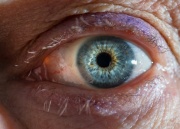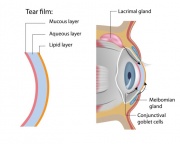Contents |
The BlephEx: A New Tool for Better Treatment in Blepharitis
Blepharitis is the medical term used for a family of eyelid margin disorders and inflammation that cause symptoms such as redness, swelling of the lid margins, itching or burning, dryness, crusty eyelids, grittiness and even the eventual loss of eyelashes.
Possible causes of blepharitis are underlying bacterial infection, skin conditions or infestation by a mite called demodex; in these, it is possible to treat these to a large extent by treating the source of the problem, improving comfort and reducing symptoms, but in some cases blepharitis is caused by improper hygiene practices and treatment must address that issue as well.
Patients shouldn’t try to self-diagnose this condition, or try to treat it on their own, because if there is an underlying infection, it’s important to treat that first; only your eyecare provider can make that distinction and get treatment started in that case.
Treatment
First, it helps to understand that the natural tears are composed of three main layers or components, each of which is essential in keeping the eye lubricated and comfortable. About 90% of tears are made of what most people would call salt water; the other ten percent keeps the tears in place on the surface of the eye and keeps them from evaporating too quickly. All three factors must be present and in balance to provide clear, comfortable vision.
That last ten percent of the tear layer is of particular importance; there are numerous tiny glands located in the upper and low eyelids that open just behind the line of the eyelashes. These meibomian glands, must be working efficiently to maintain a good tear layer on the eye.
When the meibomian glands are not working well it results in an imbalance in the tear layer; the glands may be blocked or the tear components may be too thick and hard to come out of the openings properly. The result is blepharitis.
Blepharitis cannot usually be completely cured, but can be controlled to a large extent with the use of selected eyedrops to improve lubrication, hot compresses and lid scrubs to remove debris from the margins of the eyelids with either a commercial scrub preparation or a solution of baby shampoo with sterile saline. That these treatments sometimes require an individual to perform this routine several times a day make it hard for most people to keep up with them during their working day.
The BlephEx Tool
A mainstay of treatment for blepharitis has been for an eyecare practitioner to thoroughly clean the lids in the office, to remove debris from around the eyelashes, followed by physically squeezing the glands to express their contents, which allows for a visual evaluation of their function, and to improve comfort overall.
The BlephEx is a smart little gadget an eyecare practitioner can use in the office to provide a thorough cleaning to remove oils, skin flakes, scales and other debris from the margins of the eyelids. It is a step forward in the treatment of blepharitis.
What to Expect
Treatment with the BlephEx instrument is very well tolerated, is not painful and results in improved comfort almost immediately. Most people report only a mild “tickling” of the lids during the procedure, which takes less than five minutes.
First, the practitioner will use a numbing drop in each eye. After that, a new sponge-tip is applied to the tool and it is dipped into the scrub liquid. The doctor will then use the BlephEx to gently scrub each lid margin.
The BlephEx is a small rotating brush which is very effective at removing any foreign matter. The brush will rotate in both directions, so each lid is cleaned from both directions at the base of the lashes. The eye is rinsed with a sterile saline solution and the tip is replaced for the other eye. Depending on the severity of the blepharitis, the treatment can be repeated.
The BlephEx web site, http://www.rysurg.com/ has more information, a video of an actual treatment and photographs of eyelids immediately before and after treatment.
Patients should still use basic lid hygiene techniques, including hot compresses and lid scrubs at home to help keep the condition under control. Blepharitis is a chronic condition that can’t be cured, but comfort can certainly be increased, and the BlephEx can help achieve that.
Better Treatment, Better Results
This condition can be complicated at times when patients use contact lenses or apply eye makeup improperly inside the lash line. However, neither contact lenses nor makeup need to be discontinued entirely, but proper care and disinfection of lenses and using good quality makeup materials is important in controlling blepharitis.
It is also important for patients to realize that no treatment currently available can be considered as a cure for blepharitis, and they will need to continue indefinitely with good lid hygiene efforts, including meticulous contact lens care, and complete replacement of all eye makeup materials every six months to avoid contamination; it is never a good idea to borrow makeup or to lend it to others.
The BlephEx is a new treatment modality for blepharitis and may not be covered by health or vision insurance. Most patients suffering from this condition, however, will find the treatment to be economical, especially in terms of the time they would otherwise spend doing lid scrubs and hot compresses. The improved health of the lid margins and decreased symptoms make this therapy worthwhile.



